Welcome to our comprehensive guide to understanding the working model of hydroponic farming! Whether you’re a curious enthusiast or an aspiring farmer, this blog will break down the principles of hydroponics. Hydroponic farming is a revolutionary method that allows plants to grow without soil, relying instead on nutrient-rich water solutions.
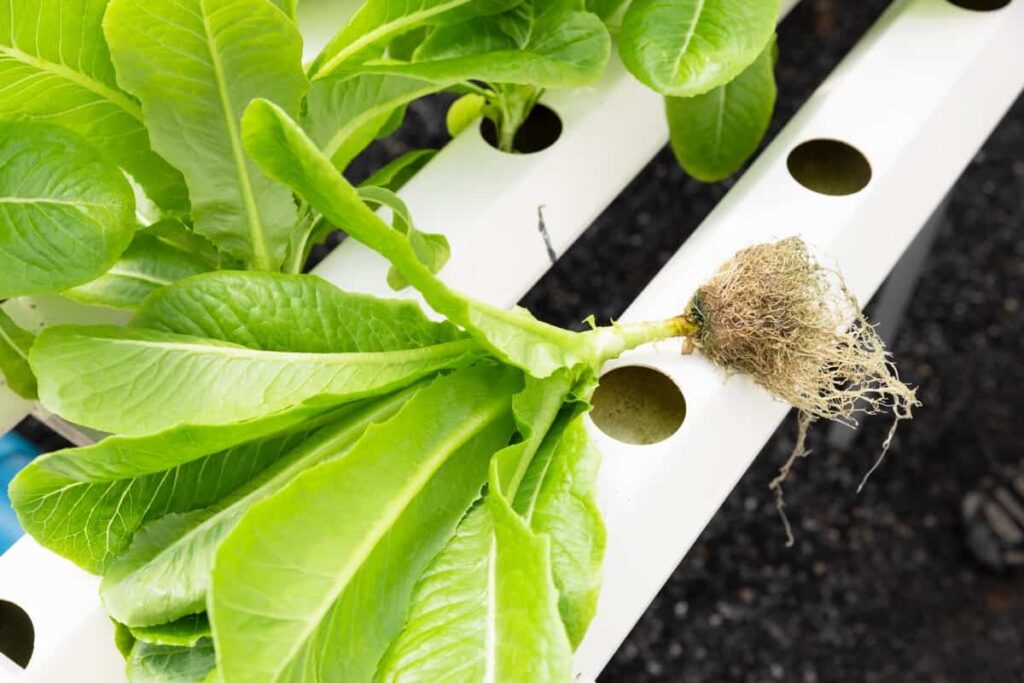
Throughout this guide, we will explore the key components of a hydroponic setup, the various types of hydroponic systems, and their working models. Join us on this exciting journey as we uncover the advantages, techniques, and practical applications of hydroponic farming.
What is Hydroponics?
Hydroponics is an innovative agricultural method that eliminates the use of soil in plant cultivation. Hydroponics is a soilless plant-growing method that relies on nutrient-rich water solutions. It directly provides plants with the necessary nutrients for their roots, creating a controlled environment that maximizes growth and minimizes water usage.
Modern Hydroponics
In the 1930s, biologist William F. Gericke drew attention to hydroponics with his groundbreaking research. He demonstrated that plants could thrive in water without soil, challenging traditional beliefs. Gericke’s success in growing 25-foot-tall tomato plants that yielded an impressive 17 pounds of fruit per plant revolutionized farming and attracted global interest.
Hydroponics has evolved significantly, incorporating advancements in chemistry, data science, and automation. According to estimates, this precise, data-driven, and scalable approach is reshaping agriculture on a large scale, with hydroponic technology generating around $32 billion in sales.
Benefits of Hydroponics
High Yield: Hydroponics allows for a higher calorie yield per unit of growing area, making it a valuable solution in regions facing food shortages. Plants grown hydroponically can achieve growth rates up to 20% faster than traditional soil-bound crops.
Control: Hydroponic systems provide a controlled environment, minimizing external influences. Hydroponics optimizes growth conditions by delivering nutrient solutions tailored to specific plant needs.
Water Efficiency: Hydroponics conserves water, using up to 90% less than conventional field crop irrigation. Recirculation techniques reduce wastage, addressing water scarcity and inefficiencies in traditional farming.
In case you missed it: 15 Common Mistakes to Avoid in Hydroponic Farming: Beginner’s Guide
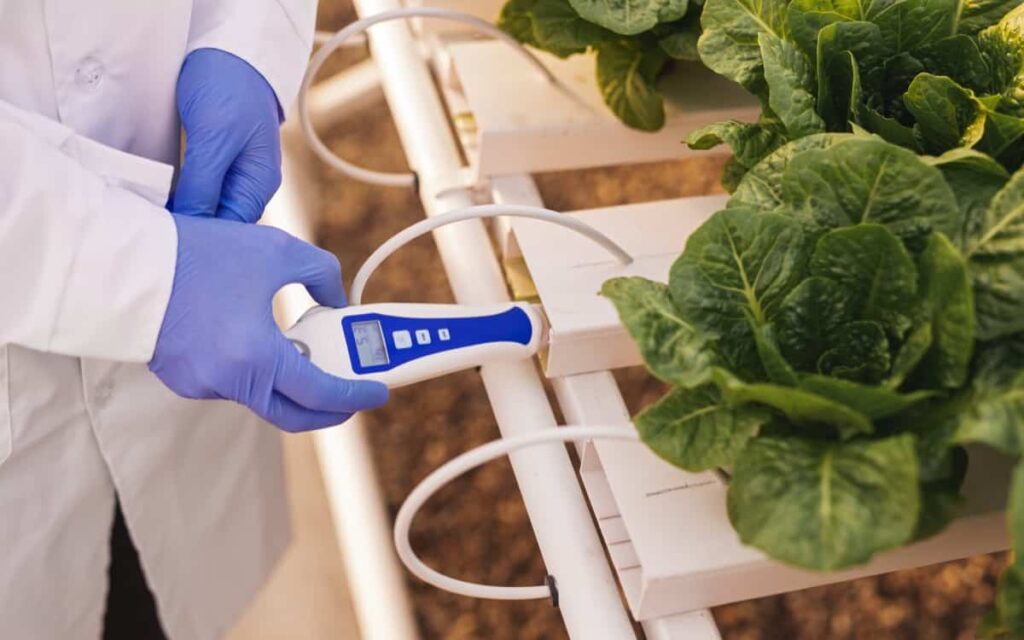
Regional Diversity: Hydroponics offers versatility in growing locations. From homes to greenhouses and even desert environments, hydroponic agriculture can be adapted to address local food demands, providing solutions for diverse climates and regions.
Continuous Production: Unlike traditional agriculture, hydroponics enables year-round crop production, free from the constraints of changing seasons. This continuous supply of fresh produce reduces the need for food preservation methods.
Reduced Toxin Usage: Hydroponic systems reduce reliance on chemical herbicides and pesticides. With no soil for pathogens to thrive in, pests and diseases are naturally minimized. Although some chemicals may still be used in certain hydroponic setups, home systems can remain pesticide-free and environmentally friendly.
How Does a Hydroponic Farming System Work?
Hydroponic farming involves growing plants without soil using a nutrient-rich water solution as the primary medium. Plants are placed in substrates like perlite or coconut coir, with roots immersed in the nutrient solution. This system provides a precise balance of essential elements for plant growth, including nitrogen, phosphorus, potassium, and trace minerals.
Hydroponic systems closely monitor environmental factors like temperature, humidity, pH levels, and lighting to maintain optimal conditions for plant growth. Regular monitoring and adjustment of water and nutrient levels ensure optimal plant growth.
What Are the Key Components of a Hydroponic Farming Setup?
A hydroponic farming setup consists of several essential components that work together to support plant growth and provide an optimal environment for cultivation.
- Grow Trays/Containers: These containers hold the plants and growing medium, providing support and stability.
- Growing Medium: This material replaces soil and anchors the plants’ roots, allowing water and nutrients to circulate. Examples include perlite, coconut coir, or rockwool.
- Nutrient Solution: A carefully balanced mixture of essential nutrients dissolved in water. It provides plants with the necessary elements for growth, including nitrogen, phosphorus, potassium, and trace minerals.
- Water Reservoir: This container holds the nutrient solution pumped or delivered to the plants.
- Water Pump: It circulates the nutrient solution, ensuring consistent delivery to the plant roots.
- pH and EC Meter: These tools measure the nutrient solution’s acidity/alkalinity (pH) and electrical conductivity (EC) levels. Monitoring and adjusting these levels are crucial for plant health.
- Grow Lights: Artificial lighting systems, such as LED or fluorescent lights, provide the necessary spectrum and intensity of light for photosynthesis without sunlight.
- Air Pump and Airstones: These components provide aeration and oxygenate the nutrient solution to prevent root rot and promote healthy root development.
- Timer and Control System: A timer automates the lighting and nutrient solution delivery cycles, ensuring plants receive consistent care.
- Temperature and Humidity Control: Equipment like heaters, fans, and humidifiers help maintain optimal temperature and humidity levels for plant growth.
In case you missed it: How to Grow Lettuce and Salad Mix in Hydroponics: A Step-by-Step Guide
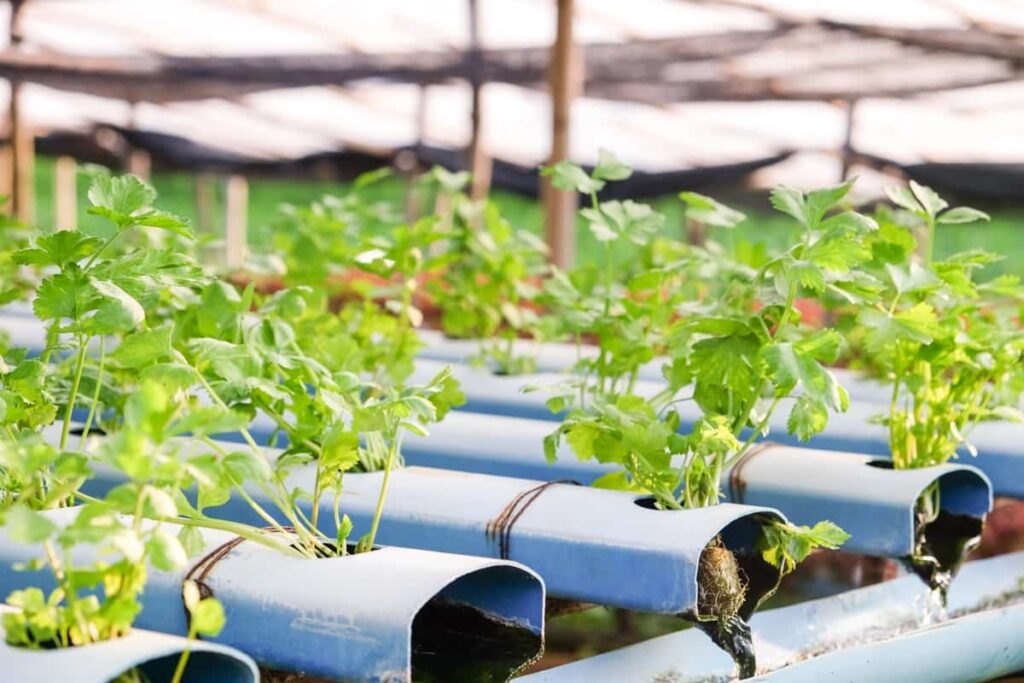
Can You Explain the Working Principles of Nutrient Solutions in Hydroponics?
The working principles of nutrient solutions in hydroponic systems are crucial for successful plant growth. These systems provide plants with a balanced nutrient solution enriched with essential elements like nitrogen, phosphorus, potassium and micronutrients like iron, manganese, and zinc.
The nutrient solution is formulated to meet the specific requirements of different plant species and is adjusted to maintain a desired pH level between 5.5 and 6.5. The roots of the plants are submerged or exposed to the nutrient solution, allowing them to directly uptake the required nutrients, resulting in faster and more efficient absorption.
Regular monitoring and adjustment of the nutrient solution are necessary to maintain the correct balance and pH level, ensuring plants receive adequate nutrition for healthy growth and maximum yields. By fine-tuning the nutrient solution composition and maintaining optimal conditions, hydroponic systems offer precise control over plant nutrition, leading to faster growth rates, increased yields, and healthier plants overall.
What are the Advantages of Using a Working Model for Hydroponic Farming?
Hydroponic systems offer a sustainable solution for plant growth, ensuring optimal nutrition and reduced pest and disease pressure. These systems require less water, nutrient solution control, and space efficiency, making them suitable for urban and indoor farming. They also provide faster growth rates, reduced pest and disease pressure, year-round cultivation, minimal weeding, and no soil erosion, promoting sustainable farming practices.
Hydroponic systems also provide greater control over environmental factors, ensuring consistent crop quality and flavor. They require fewer pesticides and herbicides, resulting in cleaner and healthier produce. Vertical hydroponic systems maximize space utilization, reducing water usage, chemical runoff, and land requirements compared to conventional farming.
What Are the Different Types of Hydroponic Systems and Their Working Models?
- Wick System: Nutrients are drawn from a reservoir through a string or wick into the growing medium. Simple and suitable for small-scale setups, but not ideal for larger plants.
- Deep Water Culture System (Kratky Method): Plants are placed in pots on a floating holder, allowing their roots to reach the nutrient-rich water below. Low maintenance and cost-effective, but not suitable for large or long-growing plants.
- Nutrient Film Technique (NFT) System: A continuous nutrient flow is provided to plants through a slightly downward-facing tube, eliminating the need for a growing medium. Common in vertical farms and commercial settings but requires regular maintenance.
- Ebb and Flow System: The nutrient solution is periodically pumped from a reservoir into a growing tray and drains back. Customizable and efficient in water and energy usage, but requires a major amount of growing medium.
- Drip System: The nutrient solution is delivered to plants through drip lines controlled by a timer. Provides schedule control but can be excessive for small home gardens and may wastewater.
- Aeroponics: Plants are suspended in the air without any growing medium. A timer-controlled spray system delivers nutrient solution directly to the roots, promoting increased oxygen exposure.
- Aquaponics: Combines fish farming with hydroponics, creating a symbiotic system. Fish waste is filtered by plants, providing nutrients for their growth, resulting in a potentially more sustainable and interconnected system.
In case you missed it: How to Grow Edible Flowers in Hydroponics: A Step-By-Step Guide for Beginners
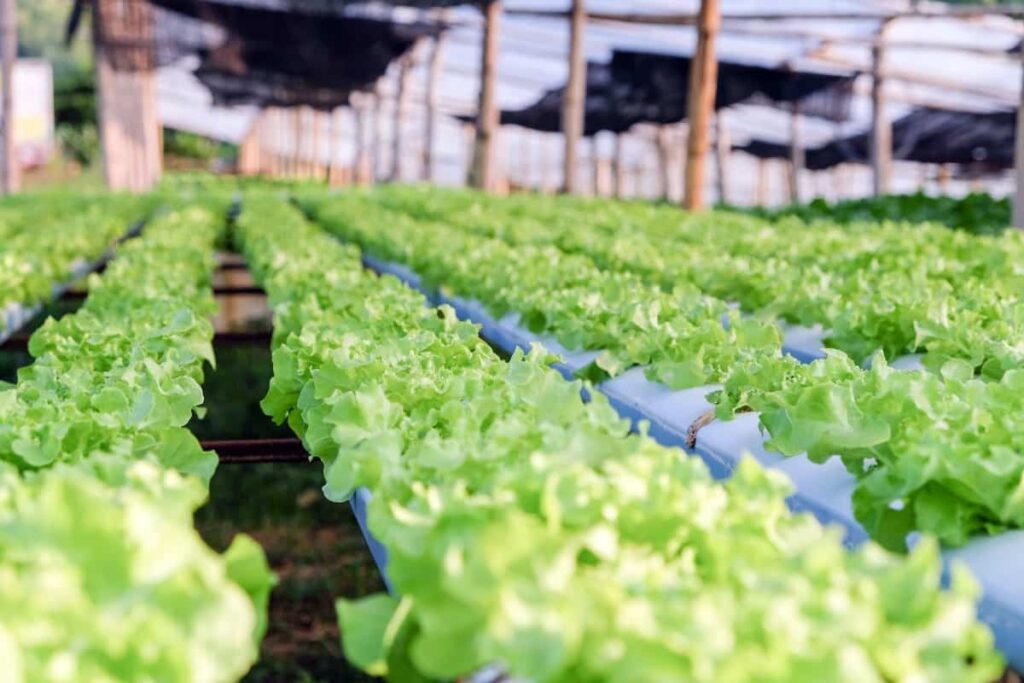
How Does a Recirculating Hydroponic System Function?
A recirculating hydroponic system grows plants in a soilless environment where nutrient-rich water is continuously circulated and reused. First, the plants are placed in a growing medium, such as coconut coir or perlite, supporting the roots. The roots are then submerged or exposed to a thin film of nutrient solution.
The nutrient solution, containing essential minerals and elements for plant growth, is continuously pumped and circulated through the system. As the solution flows over the roots, it provides the necessary nutrients directly to the plants. The excess solution not taken up by the plants is collected and returned to a reservoir.
The solution in the reservoir is monitored and adjusted regularly to maintain the appropriate nutrient balance. The recirculating system promotes water and nutrient efficiency since the solution is reused instead of being wasted. It also allows for precise control of nutrient delivery, pH levels, and oxygenation, ensuring optimal conditions for plant growth.
What Is the Role of pH and EC Levels in the Working Model of Hydroponic Farming?
pH: pH measures the acidity or alkalinity of the nutrient solution. Maintaining the pH within a specific range suitable for plant absorption of nutrients is essential. Different plants have different pH preferences, but generally, a pH range of 5.3 to 6.5 is optimal for most hydroponic crops. Nutrient availability can be affected if the pH deviates too much, leading to nutrient deficiencies or toxicities.
EC: EC measures the concentration of dissolved salts or nutrients in the nutrient solution. It helps determine the solution’s strength and indicates nutrient levels available to the plants. Monitoring and adjusting EC levels ensure plants receive the appropriate nutrients for healthy growth. The desired EC levels vary based on plant species, growth stage, and environmental conditions.
How Does Hydroponic Farming Optimize Water and Nutrient Usage?
Hydroponic farming optimizes water and nutrient usage by providing plants with direct access to the necessary resources. Water is recirculated within the system in hydroponics, reducing water consumption compared to traditional soil-based farming. Additionally, nutrient solutions are precisely delivered to the plant roots, minimizing waste and ensuring efficient nutrient uptake.
Studies have shown that hydroponic systems can reduce water usage by 90% compared to conventional farming methods while maintaining or even increasing crop yields. This efficient use of water and nutrients makes hydroponic farming a sustainable and environmentally friendly approach to agriculture.
Can You Explain the Concept of Aeration and Its Importance in Hydroponic Farming?
Aeration in hydroponic farming refers to the process of providing oxygen to the root zone of plants. It is crucial because roots need oxygen to function properly. Aeration in hydroponic systems, where plants are grown without soil, ensures that the roots receive adequate oxygen. This is typically achieved using air pumps or stones to introduce oxygen into the nutrient solution. Proper aeration promotes healthy root development, enhances nutrient absorption, prevents root rot, and increases plant vigor and productivity in hydroponic setups.
What Are the Lighting Requirements and the Working Model of Artificial Lighting in Hydroponic Systems?
Artificial lighting replicates the effects of natural sunlight in indoor environments. The lighting requirements vary based on plant species and growth stage. High-quality grow lights, such as LED or high-intensity discharge (HID) lamps, are commonly used in hydroponics. The working model of artificial lighting involves positioning the lights at appropriate distances and durations to ensure the right intensity and photoperiod, promoting optimal plant growth, development, and yield in hydroponic systems.
In case you missed it: How to Grow Leafy Green Vegetables in Hydroponics: A Step-by-step Growing Guide
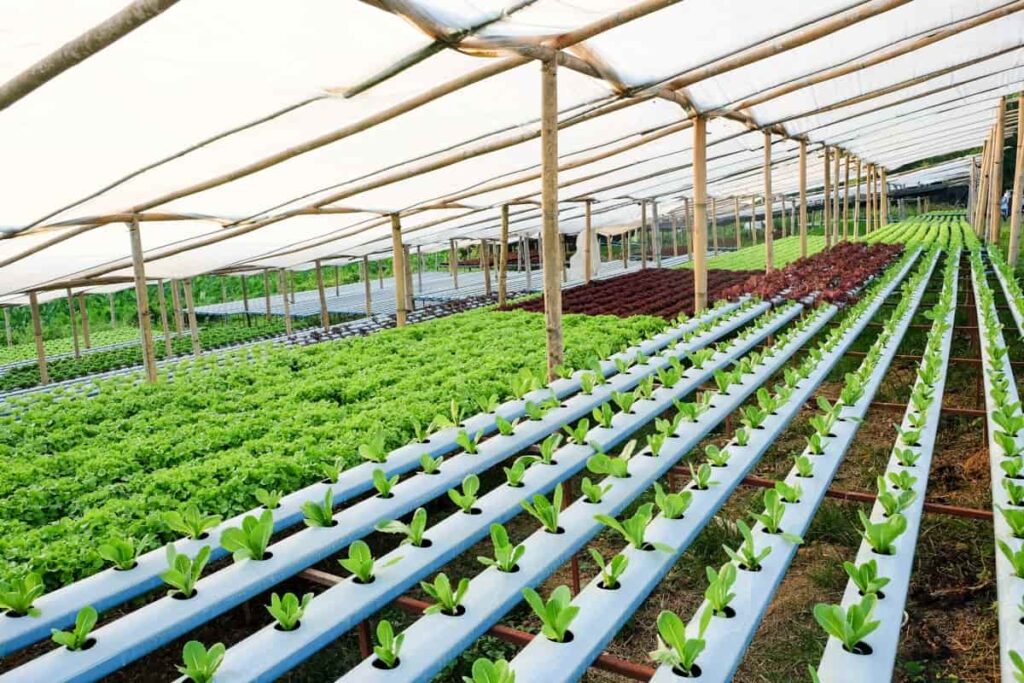
How Does the Nutrient Film Technique (NFT) Work in Hydroponic Farming?
The Nutrient Film Technique (NFT) is a popular hydroponic system that uses a thin film of nutrient-rich water flowing over the roots of plants. In an NFT system, plants are placed in channels or troughs, and the nutrient solution is continuously pumped through these channels.
The roots are partially submerged in the flowing solution, allowing them to absorb the necessary nutrients. The excess solution is collected and recirculated back to the reservoir, ensuring a continuous supply of nutrients to the plants. This method provides constant oxygen to the roots and promotes efficient nutrient absorption for healthy plant growth.
Can You Describe the Working Model of a Vertical Hydroponic System?
A vertical hydroponic system maximizes space utilization by growing plants vertically, stacked on each other. This setup involves vertically aligned channels or towers, with plants growing in containers or net pots filled with a growing medium. Nutrient-rich water is pumped from the bottom, cascading over the roots, and gravity distributes water and nutrients evenly.
Excess solution is collected at the bottom and recirculated back to the reservoir for reuse. This design is suitable for urban farming or limited space environments, offering increased yield per square foot and easier access to plants for maintenance and harvesting.
What Is the Role of Hydroponic Media in the Working Model of Hydroponic Systems?
Hydroponic mediums, also called substrates, are essential to hydroponic systems. These mediums assist plant roots and control root zone moisture and oxygen. The media should be lightweight, porous, water-holding, and aerated. Coco coir, perlite, vermiculite, rockwool, expanded clay, and peat moss are hydroponic mediums. The medium help plants attach their roots and receive nutrients from the nutrition solution. They balance water and air around the roots to promote root health.
How Do Automated Systems Enhance the Working Model of Hydroponic Farming?
Hydroponics, a soil-less agriculture system, offers resource efficiency compared to traditional methods. However, monitoring multiple parameters and providing nutrition suggestions could be improved. An Artificial Intelligence-based Smart Hydroponics Expert System (AI-SHES) integrated with the Internet of Things (IoT) has been proposed to address this.
It comprises hardware with real-time sensors, a deep learning convolutional neural network model for nutrient prediction and disease detection, and an Android mobile application for monitoring. The AI-SHES also incorporates an automated mode for increased productivity. Simulation results demonstrate superior disease detection and classification performance, achieving high accuracy and F-measure.
In case you missed it: How to Grow Bok Choy Hydroponically: A Step-by-Step Guide for Planting to Harvesting
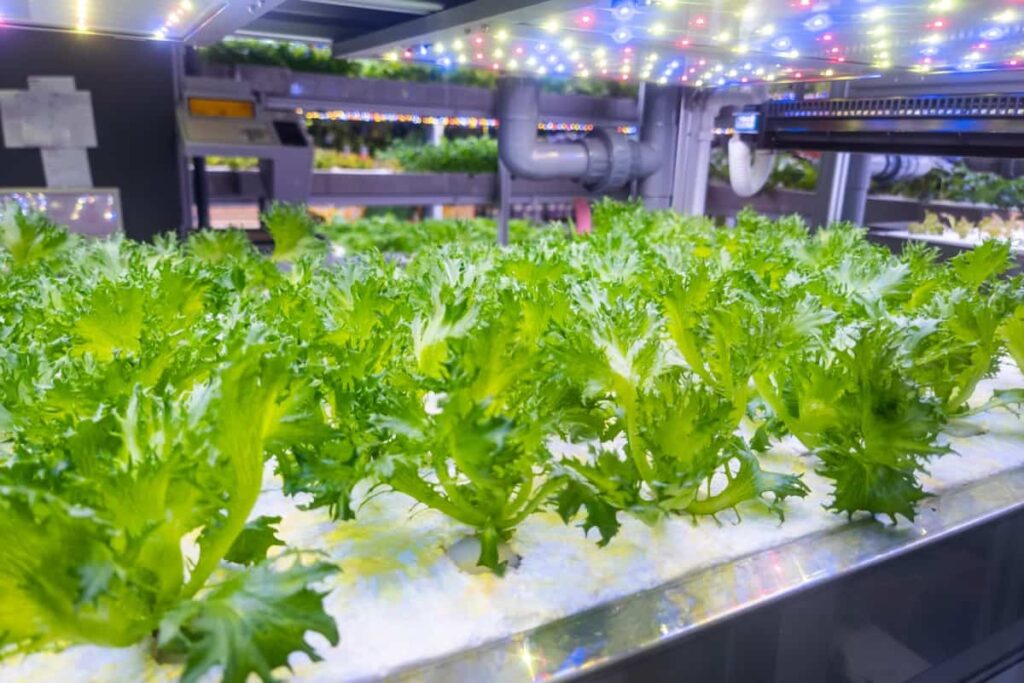
Conclusion
Hydroponic farming offers a sustainable and efficient approach to agriculture. Understanding its working model, from nutrient solutions to system types, can harness its benefits for increased crop yield, water conservation, and regional diversity in food production.
- Crops Grown in Summer Season: Best Choices for Summer Gardening
- Organic Pest Control for Tomato Farming
- How to Maximize Sheep Farming Profit
- Broccoli Varieties: Choosing the Right Cultivars for Your Farm
- How to Raise Pigs in Your Own Backyard: A Comprehensive Guide
- Budget Friendly Sheep Shed Ideas: Cheap and Low-Cost Tips
- How Much Do Cattle Farmers Make: Revenue Streams in Cattle Farming
- Management Pests and Diseases in Your Cotton Field
- Sheep Farming Business Plan for Beginners
- Aquaponic Farming at Home: A Step-By-Step Guide
- Profitable Village Farming Business Ideas in 2024
- High-Yield Aquaculture: Fast-Growing Fish for Farming
- Effective Fish Pond Construction Techniques for Beginners
- Irrigation and Water Management in Pineapple Farming
- Blossom to Harvest: Mastering Flowering and Pollination in Papaya Farming
- Pig Fattening Essentials: From Selection to Sale for Beginners
- Raising Wagyu Cattle: A Complete Guide for Premium Beef Production
- Soil Types and Their Water Holding Capacity
- Optimizing Irrigation Schedules for Coconut Groves for Enhanced Yield
- Espresso Your Garden: Coffee Grounds for Healthier Acid-Loving Plants
- The Best Soil Mix for Snake Plants: How to Mix Your Own Snake Plant Soil
- Green Thumb Success: Expert Tips for Cultivating Greenhouse Beans All Year Round
- Bloom All Year Round: The Ultimate Guide to Indoor Hyacinth Care
- Eco-Friendly Gardening: How to Make Liquid Fertilizer from Kitchen Waste
- Ultimate Guide to Grow Anise in Pots: Explore Seed Propagation to Harvesting
- Guide to Raising Chester White Pigs: Discover Breed Facts to Growth Management
- Mastering the Elegance: The Ultimate Guide to Weeping Cherry Tree Care, Planting, and Maintenance
- Ultimate Guide to Planting Garlic in Grow Bags: Growing Strategies for Beginners
- How to Fix Spider Plant Leaf-Related Problems: Natural and Organic Remedies
- 10 Reasons Why Your Tulsi Plant is Shedding Leaves: Home Remedies and Solutions
- Optimizing Growth and Yield: The Advantages of Palm Bunch Ash Fertilizer
- Utilizing Neem Oil Extract as a Natural Pesticide for Hydrangea
- From Soil to Harvest: Various Ways in Which Farmers Can Use AI Tools
- Steps to Encourage and Induce Citrus Flowers: A Comprehensive Guide
- How to Fix Snake Plant Leaf-Related Issues: Natural and Organic Remedies
- Transform Your Garden into a Fragrant Oasis with Raat Ki Rani (Night Blooming Jasmine)

I found it very informative and useful.
I would like to learn more about preparing nutrient solutions in-house.